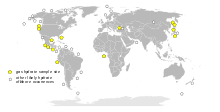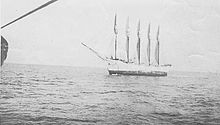The Haunted Railway Station of Begunkodor
Paranormal Activities – some of the very few most ‘googled’ keywords. When it comes to the supernatural, India surely attracts a couple of extra votes – and why shouldn’t it? India is a country with diverse cultures, religions, diverse nature of people and obviously so many different superstitions. Paranormal Activities in India have been setting up their own benchmarks. True or False, Believable or not, these stories have certainly mesmerized people for centuries.

Often, we overhear different incidents, reports, myths of variousghost stories in India. These incidents are rooted at various locales such as historical forts, railway stations, hotels, hill stations etc. Talking about railway stations - so many apparition stories have been reported worldwide. These are often referred to as ‘Ghost Trains’, ‘Haunted railway stations’, ‘Abandoned stations’ etc. One interesting thing when it comes to history of railways is that there are loads of incidences which may seem to be the probable causes to myths & legends. Railway lines and stations have stories of grisly deaths in which the victims stick around in spirits form. People die as a result of accidents, natural deaths and suicides. Obviously, the iron lines mesmerize people who are determined to end themselves. Some say many of these unfortunate souls linger on and are trapped within the physical boundary of their death

Though many railway stations in India have their own set of tell-tales, there’s one who leaps higher. Now, this is not just another one of the spooky stories in India since this one affected the lives of common middle class population localized in Begunkodor. Begunkodor is a village in Purulia district of West Bengal situated 46kms from Purulia. The village included a haunted railway stationthat remained closed for almost 42 years (from 1967 to 2009). According to villagers, one of the railway employees died in 1967 after witnessing a female specter draped in white saree (Indian female clothing). All the railway employees were terrified of the spook; they abandoned the station in fear. Soon this station was no longer a stop for the passing wheels. Basudeb Acharya, former chairman of the Parliament’s standing committee on railways argued that the railway staff ‘cooked up’ this story to avoid their posting at such a remote location. Mamta Banerjee, the railway minister in 2009 dismissed all the reports of the apparition appealing “I don’t believe in ghosts. It is all man-made.” The railway station was reopened calling it for celebration for the locals there.
On one hand the facts still remain vague while on the other hand there are reports affecting the locals for nearly half a century. One question that would certainly worry you would be: how did the senior officials agree to such stories from their employees? Isn’t India now way above ‘developing’ nations? But all the bureaucrats are the same aren’t they? You scratch my back and I’ll scratch yours!
Many thoughts rush up to me when I think about such stories. Why remote railway stations? Why not buzzing airports? What would have the ghosts done even if the trains continued going through and stopping by this station? Would the trains disappear in thin air? How do the trains passing by trouble the shades anyway? Would the noise of trains be disturbing them? Some questions remain unanswered (for the higher good) and yet, living mortals continue to witness such unfinished businesses.





